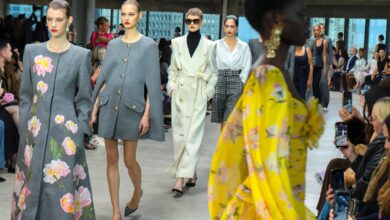The rise of the social media influencer: this marketing industry will be worth US$10 billon by 2020
Love them or loathe them, influencers are here to stay

In the past years, the term social media influencer has become the biggest buzzword, arriving to define everything from puppies on Instagram to the latest social media darling. But what are influencers, why is the social media landscape invaded with them and do they really have the power to build a brand? A social media influencer is a person who has a specific power and credibility in his/her industry and has a substantial following, being capable of influencing consumer trends.
Leer en español: El ascenso del influencer en las redes sociales: esta industria valdrá US $ 10 mil millones en 2020
Italian It-girl Chiara Ferragni with her 13,7 thousand followers on Instagram is the Queen of Fashion Influencers and she landed at #1 on Forbes list of Top Influencers. Leandra Medine, the genius behind Man Repeller, and Julia Engel from Gal Meets Glam present two distinctive styles that didn’t stop them from conquering their respective markets.
This not new at all. For decades, established brands used media stars, supermodels, and famous athletes as tools to promote their products and services, known as Brand Ambassadors. The only difference is that, due to the rise of a tech-savvy and social media-driven customer base, these corporate ambassadors have been replaced with digital pioneers who enjoyed a significant online power. With an impressive online following and a language that appeals to younger consumers (millennials and Generation Z), the new opinion makers gave brands an innovative way to connect to consumers and engage the audience by surpassing traditional communication channels. Expensive TV and magazine ads have been replaced with online campaigns where millennial peers offer “trustworthy” reviews and engage in an open dialogue with their followers. This interaction between influencer and followers creates a bond that can’t be replicated through traditional marketing channels.
Read also: A Royal inequality: wage gap in the Netflix series The Crown
According to Retail Drive, online platforms like Instagram and Snapchat have a major influence on consumer behavior: 72% of users report making fashion and beauty purchases based on Instagram posts. As Influencer’s reviews might pass as peer recommendations; younger consumers are attracted to this approach due to the authenticity and the straightforwardness that they bring. On the other hand, brands appreciate bloggers and YouTube stars due to their talent for driving engagement and increasing brand awareness, while keeping the marketing costs at a reasonable level.
As stated by Ad Week magazine, by the year 2020, influencer marketing industry will be a $10 billion market expanding exponentially over the upcoming years. But not everyone is a fan of user-generated platforms and social media influencers and content creators. Esquire magazine editor-in-chief, Jay Fielden, called influencers paid promoters, while an online entry by Sally Singer, Vogue’s Creative Digital Director, advised “bloggers who change head-to-toe, paid-to-wear outfits every hour" to stop and find another business showed there’s some bad blood between the old guard and the new upcoming talent.
Despite its critics, these digital pioneers continue to rule the online landscape and according to a study by Klear, 2017 was another year of growth. The Klear research showed an increase of 198% in 2017, proving that more established brands are beginning to select the Influencer marketing tool. Women continue to be seen as better role models in the digital landscape, who dominate the market in a wide range. 83.9% of the #ad posts were created by women, but then again 58% of Instagram users are female. Seeing the data from past studies, it's safe to say that despite massive outcry, influencers are here to stay.
LatinAmerican Post | Adina Achim
Copy edited by Laura Rocha Rueda




